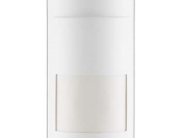Table four shows that within the commune election of 1909, there were 41 women’s lists, electing 12 per cent of all elected women, even when they only constituted 1 per cent of all lists. Women’s lists were shaped in cities as well as in rural districts, however never within the capital.
Denmark Bans Full
Their activity was aimed extra on the mobilization of women as voters and as party members. The women’s sections had been established inside the massive Danish political events in the 1920’s and 1930’5; their major goal was additionally to extend the female rank and file . All four large political events in Denmark issued statements supporting women’s authorized equality and a few different feminist points – always in rather noncommittal phrases. The events, nonetheless, did not seem to care a lot about this new group of voters.
Even if Dansk Kvindesamfund didn’t reach an agreement on an alternate channel of representation for women, it did attempt to enhance feminine representation within the political parties. It requested the events to consider the feminist calls for when drawing up their celebration platforms. It questioned the events’ candidates in the course of the electoral campaign as to their attitude towards https://yourmailorderbride.com/danish-women/ equal pay, women’s admittance to all public workplaces, authorized equality between husband and spouse, and many different feminist demands. In this way it hoped that the feminine citizens would favor candidates who supported feminist demands. Because it wanted to remain impartial with regard to party politics, it dared not advocate sure parties.
In 1909 there have been 10 women’s lists in city districts; in the 1913 election only three. In some communes, the 1909 lists disappeared in 1913, whereas women have been elected on different lists within the commune. In different circumstances, nevertheless, the women’s lists disappeared, even if women had not been given a place on different lists that may almost certainly guarantee them election.
The women who had discovered their means into the political events usually rejected the thought of a Women’s Party. The socialists argued that the advocates of a Women’s Party ignored the class divisions in society.
Nevertheless, Dansk Kvindesamfund was closely attacked for these actions. It was argued that girls’s organizations ought not interfere with the elections as soon as the suffrage had been granted. Apart from these appeals, there is no written proof of any collective motion by women throughout the parties to further the nomination of girls or to influence get together coverage on women’s points.
To many a Women’s Party was seen as one thing extra, namely as a channel by way of which women could enter the political system on their own phrases. The first query was whether the organization that had fought for the suffrage ought to now close down. For those that had advocated the franchise as merely an act of justice and a goal in itself the struggle was now over.
Ago
Women’s lists also received little or no help from the political press. Even the national group of Dansk Kvindesamfund didn’t support the thought. A strategy that may improve women’s poor representation had nonetheless not been discovered when women finally gained the parliamentary vote in 1915.
The chairman of the organization, Johanne Rambush, careworn that women now needed to learn to see their demands as issues of the entire society (Kvindevalgret, 1915/10). Some Landsforbundet activists later entered party politics and fought for ladies’s issues in Parliament. The women’s lists seem to have disappeared initially due to lack of support.
In that case, the disappearance of the women’s lists would have been regarded by many as a fulfilment of their purpose. The reality that ladies’s illustration did not improve, however, reveals that the women’s lists did not have this impact.
It had turn into clear that women as a bloc didn’t assist them, regardless of the hopes of the native branches of Dansk Kvindesamfund and the fears of the events. In some communes the ladies’s lists received astonishingly few votes in relation to feminine turnout. Dansk Kvindesamfund was pressured to comprehend that even when the organization itself thought that it represented all women, women as a whole didn’t.
Gender Equality In Denmark
Further, the disappearance of the lists in 1913 reveals no clear relation as to whether they won any seats in 1909. Was it because the existence of such a listing and even the specter of its formation inspired the events to include extra women on their lists?
Income And Gender Equality In Denmark
Women on the right, for his or her half, expressed some sympathy for the concept, but however felt strongly that they had little or no in frequent with socialists. In fact, their main objective was to struggle socialism.14 The advocates of a Women’s Party, in fact, normally belonged to the center of the political spectrum. If women’s suffrage and illustration have been seen as a way to use women’s special abilities and special experiences to enhance society, a Women’s Party could be a relevant means.
They knew from the native elections that that they had no reason to worry that the voters of women would change the relative strength of the parties. What did politically active women exterior Dansk Kvindesamfund think of the thought?
371 Danish Women Stock Photos, Vectors, And Illustrations Are Available Royalty
It would possibly even be thought of a,everlasting establishment, which may immunise women in opposition to the dirt of celebration politics. If women’s suffrage and girls’s representation initially had been primarily thought-about as a method of furthering women’s pursuits, then a Women’s Party grew to become equally related. For the advocates of this argument, it was never just a question of securing extra women representatives, however of putting feminists in parliament and native councils. But for the feminists, a Women’s Party would primarily be a short lived arrangement in a transitional section. In the debate some considered a Women’s Party to be the same as women’s lists on the local elections, merely as a means to get women nominated and elected the place development via the events was denied.
































